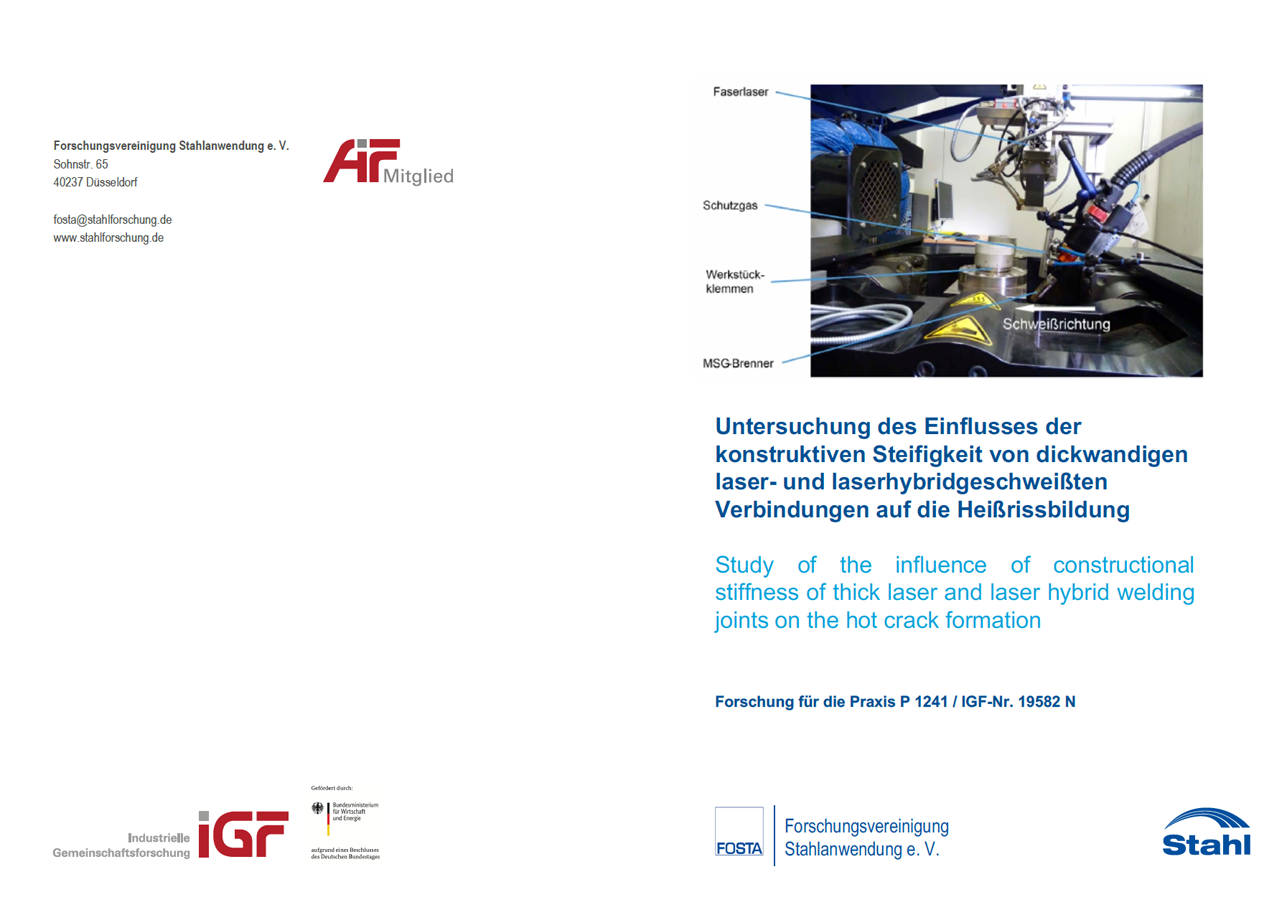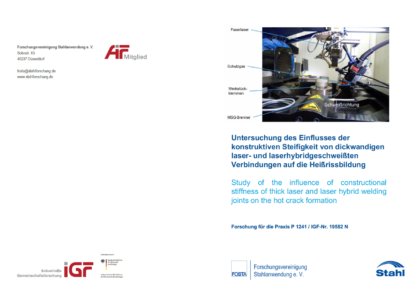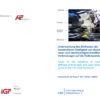Description
P 1241 – Study of the influence of constructional stiffness of thick laser and laser hybrid welding joints on the hot crack formation
In the framework of this research project to investigate the influence of the structural
stiffness of thick-walled laser and laser hybrid welded joints on hot crack formation, the restraint intensities during welding were varied by means of hot crack tests in order to obtain a relationship between the restraint intensities and crack formation. After modifying a testing machine, it was possible to simulate different restraint intensities in the context of the reaction forces. Experiments were carried out for different materials and welding methods to determine the critical range of restraint intensity where solidification cracks occur.
The numerical simulation has shown that the restraint intensity has a direct influence on the stress behavior in the bulging where the solidification cracks have been formed. The simulation results also showed that a correlation between the restraint intensities and the stress courses, i.e. by increasing the restraint intensities, the transverse and vertical stresses increase.
A self-restraint hot crack test was chosen to transfer the results from the experiments. This simplified the test procedure and made it as practical as possible for the users. By changing two geometric parameters of the sample, the restraint intensities can be varied.
Experiments were also carried out and the results show good transferability.
The influence of the welding parameters on the crack formation of specimens under critical restraint intensity was also investigated. The investigations were performed on the steel S690QL (1.8928) and for the laser hybrid welding process. It was demonstrated that by reducing the welding speed and shifting the focus position on the welding surface, the number of cracks can be significantly reduced. In the case of full penetration welding, the influence of the focus position of the laser was also investigated. The results indicate that a reduction of the focus position has an unfavorable influence on crack formation.
The self-restraint test and the investigation of the influence of welding parameters on the solidification cracking of specimens under critical restraint intensities offer the user the possibility on one hand to investigate the probability of crack formation and on the other hand to take actions in case of crack detection.
Published in:
January 2021
Authors:
Dr.-Ing. N. Bakir, Dr.-Ing. A. Gumenyuk, Univ.-Prof. Dr.-Ing. M. Rethmeier




